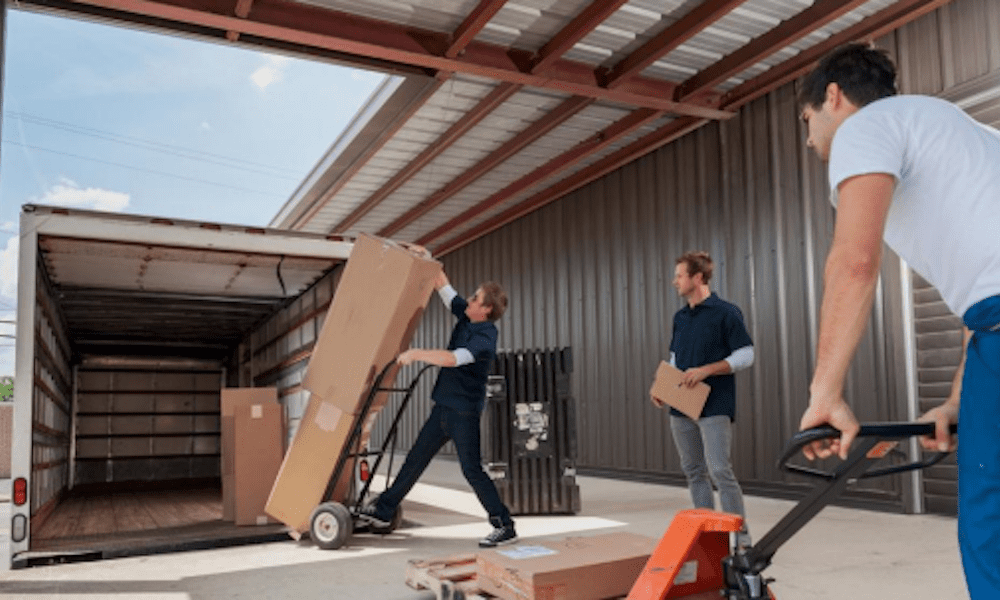
Don’t be fooled by the term “marine” in inland marine insurance: It’s a kind of insurance that covers property shipped over land. Ocean marine insurers first offered the coverage, so the word “inland” distinguishes it from cargo shipped by sea.
Today, many insurers offer this coverage, with a number of policies available for specific industries and types of property. Inland marine insurance can protect just about anything that needs to be moved by rail or truck, or temporarily stored by a third party.
- Property insured by inland marine might include:
- Musical instruments
- Fine art shows and collections
- Electronics (video, sound, radio, photography, etc.)
- Computer equipment
- Medical and scientific equipment
- Grooming equipment
- Artisan tools
- Vending machines
- Signs and billboards
- Trade show exhibits and booths
- Entertainment and special events equipment
Inland marine is also written to cover heavy equipment, machinery and infrastructure that facilitates transportation or communication, such as:
- Railway systems
- Bridges and cell towers
- Riggings
- Renewable energy equipment (solar panels, wind turbines, etc.)
- Rolling stock
- Contracting equipment
- Construction machinery
Inland marine as specialty insurance
You might already be familiar with some forms of inland marine insurance, such as:
Builders risk insurance
Builders risk covers a construction project while it’s being built. Owners, contractors and architects can purchase these policies to insure against property damage and losses, theft on job sites and business interruption. They can be written for new residential and commercial construction, remodeling and renovation, and installations through an installation floater policy.
Installation floater coverage
Plumbers, electricians, contractors and craftspeople should insure the materials they install. An installation floater policy protects equipment or materials from the point of shipment until installation for their intended purpose. (Once installed, the equipment or materials would become part of the property or builder risk policy.)
Bailee coverage
In the insurance world, a “bailee” is someone who has temporary custody, control or care of another’s property. Bailee coverage protects businesses that keep customers’ property in their possession, such as dry cleaners, auto repair shops and storage facilities. General liability or business property insurance doesn’t cover a customer’s personal property, so additional protection is needed.
Motor truck cargo coverage
If you transport property for clients (like moving and delivery services), cargo coverage can help. It protects you and your clients from direct physical loss to listed property in transit and during loading or unloading. It also covers property at a terminal or dock awaiting final distribution (like customs clearance processing).
Who needs inland marine insurance?
Most businesses have commercial property insurance or a business owners policy that protects their property at a fixed location. Property insurance may exclude protection for property in transit or stored away from the primary business location. Even if your property insurance protects your equipment when it’s away from your main office, it may not provide enough coverage for high-value items.
You ship or transport expensive things
Consider inland marine protection if you frequently transport expensive property, like scientific equipment, to various locations.
Inland marine is also available for property that needs to be shipped or stored. An inland marine policy would cover your claim if someone stole a package from your doorstep. The U.S. Postal Service and many commercial shippers don’t offer insurance for certain types of valuables or cash — or they limit the declared value to a nominal amount. Inland marine typically pays for lost and damaged property exceeding the shipper’s limit.
Questions to ask yourself
While not everyone needs inland marine insurance, you should consider it if you can answer yes to any of these questions:
- Do you transport a lot of packages or transport property over land?
- Do you transport items that are of high value?
- Do you store items in a warehouse or on another person’s property?
- Do you have custody of customer items or property (e.g., repair shop)?
- Do you use a business vehicle with a trailer tow (e.g., landscaping equipment)?
- Do you transport or store equipment and tools between locations (e.g., construction sites)?
Types of Coverage
You can purchase inland marine on a “named peril” or “all-risk” coverage basis.
- Named peril coverage protects you only from perils that are listed in the policy.
- All-risk coverage covers all types of perils unless the policy states otherwise. All-risk is generally more comprehensive and better for insuring expensive items.
Often policies have low or no deductibles, making them an attractive way to reduce the financial risk from lost or stolen valuables. They are usually written on either a replacement cost basis or an actual cash value basis.
- Replacement cost pays for a replacement of “like kind and quality.” It does not deduct depreciation.
- Actual cash value reimburses you for replacing an item minus its depreciated value. Consequently, you may receive significantly less payout.
Ways to use inland marine coverage
You can use inland marine insurance to insure personal items in your home. They need not be in transit to be covered. Since homeowners and renters policies limit how much they’ll pay in claims, you may want to consider inland marine for:
- Antiques
- Jewelry
- China and silver
- Fine art and collectibles
- Musical instruments
- Computers
- Sports equipment (golf clubs, etc.)
- Inland marine policies are also designed to cover specific situations, such as:
- Property that is stored off-site or at a customer’s site, such as a vending machine or product display
- Property that is stored in a vehicle, such as a repair truck or food truck
- Equipment used for communication or transportation
- Cargo you transport for a customer
Items excluded from inland marine coverage
Certain items are rarely covered by inland marine insurance, such as:
- Items shipped by sea or airplane (This is covered by either ocean marine or air cargo insurance, although some companies offer commercial cargo insurance to protect items transported by air, land and sea.)
- Property that stays at your main business location (This is covered by property insurance.) Your cars or business vehicles (These are covered by auto or fleet insurance.)
- Damage before shipment (This may be covered by your property insurance or a separate inland marine policy designed to insure valuables, like art or jewelry.)
Be sure to inquire about any exclusions so you are adequately insured.
An insurance professional can help you
Talk to your insurance agent about the types of inland marine policies available. Pricing will be based on how much coverage you need, whether there is a deductible, and whether you opt for full replacement value.
Whether you’re transporting equipment or need to protect valuable heirlooms in your possession, inland marine can protect your interests.




